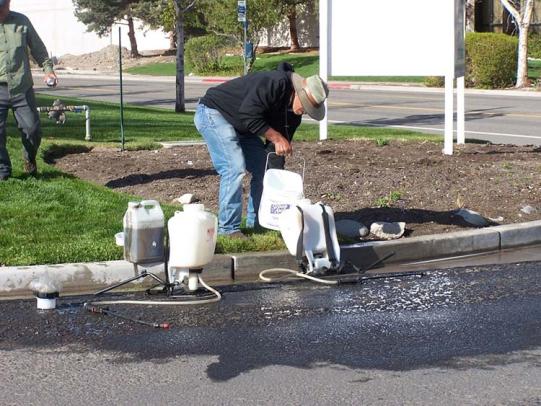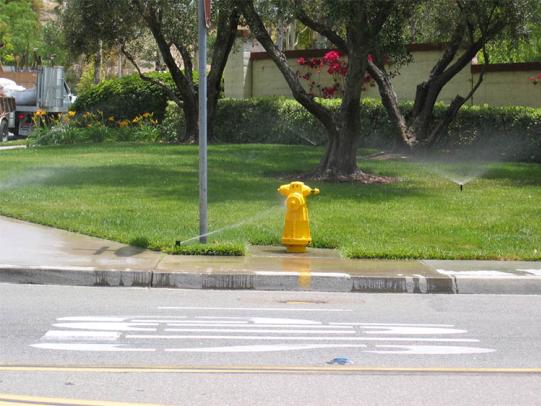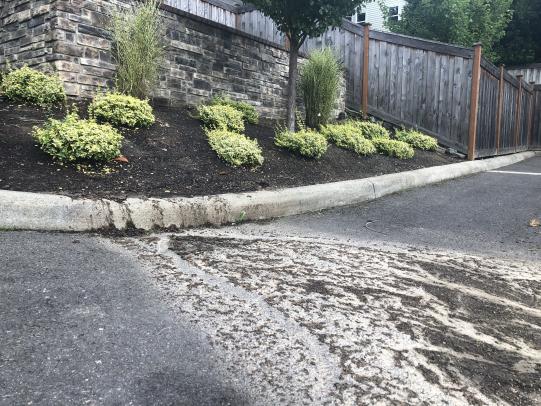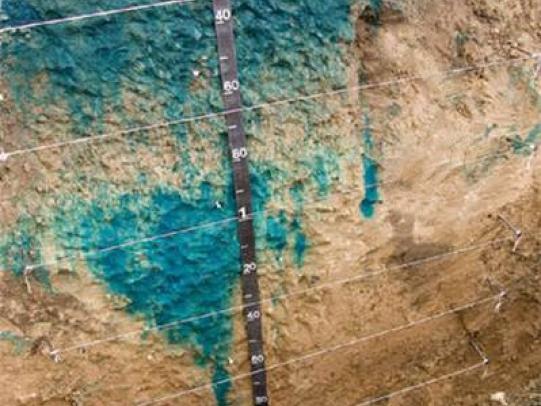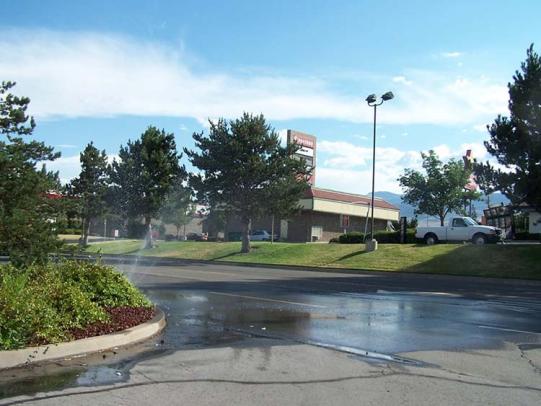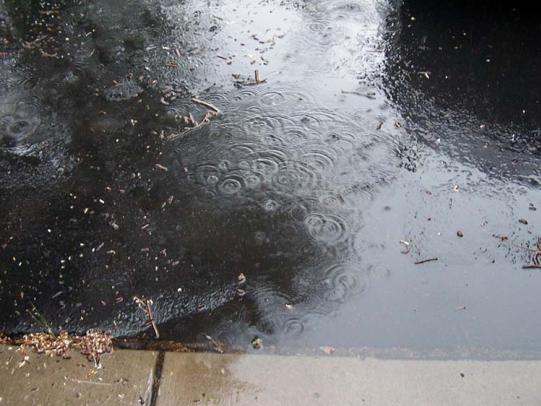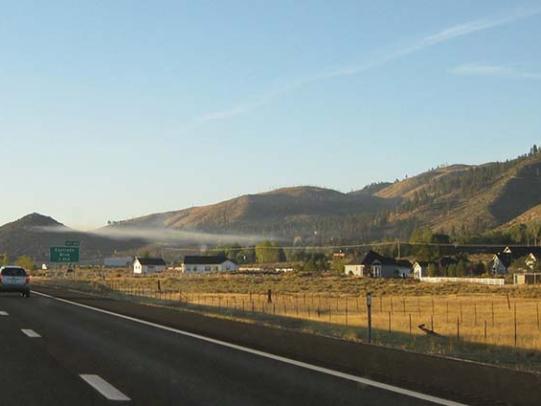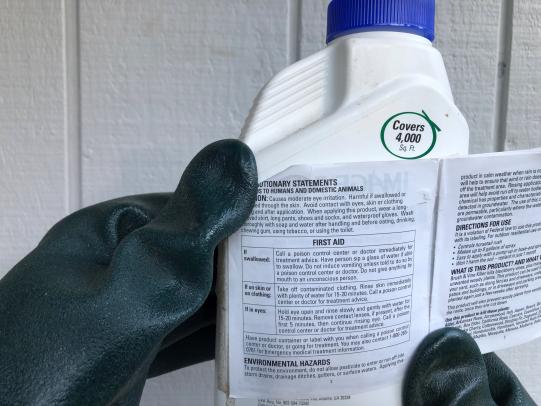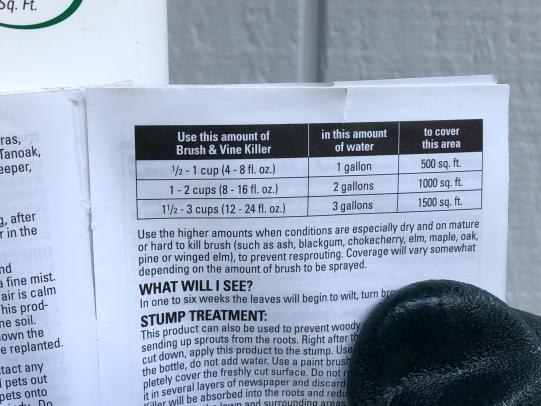How to minimize the risk of pesticides entering waterwAYS
The photo shows irrigation water from a sloped lawn area flowing into the storm drain.
This situation poses risks to waterways.
- If weed killer (herbicide) or insecticide was recently applied to the area, it could enter waterways.
- Pesticides in waterways harm aquatic life such as frogs and invertebrates.
- Fertilizer from lawns and landscapes can also harm waterways. Fertilizer in waterways causes algae blooms. When the algae dies, it leads to stagnant water (eutrophication).
What are pesticides?
Pesticides are products designed to kill rodents, weeds, mosses, insects, plant diseases, slugs, and snails. Household disinfectants such as bleach and ammonia are considered pesticides. Flea-killer products are too.
JUMP TO
- Understand How Pesticides Get into Waterways
- Pay Attention to Weather Conditions
- Read the Label & Follow the Instructions
FOR QUESTIONS ABOUT PESTICIDES
The National Pesticide Information Center (NPIC) can answer questions about pest control chemicals.
1-800-858-7378 or npic@ace.orst.edu
Overview
- Pesticides applied to landscapes can move to waterways.
- These chemicals can mix with water from irrigation or rainfall. They can also move with the wind. Some can turn into a vapor on hot days.
- Pesticides applied to land can leach through the soil into groundwater.
- Pesticides may also flow into storm drains. Storm drains often connect to creeks, rivers, lakes, or the ocean.
- Water in storm drains rarely gets treated. Even when the water goes to a treatment plant, most pesticides remain in it. Wastewater treatment plants aren’t designed to remove them.
- Pesticides that run off from landscapes can have an impact on our drinking water, recreation areas, and aquatic life.
Keys for Success
- Use information provided on pesticide labels to understand the risks of a product.
- Look for information about hazards to waterways in the ENVIRONMENTAL HAZARDS section of the pesticide label.
- Follow the instructions to minimize risks and maximize benefits.
- Avoid quick release fertilizers; use slow release instead.
- Don’t fertilize after May and if possible, wait until fall after Labor Day.
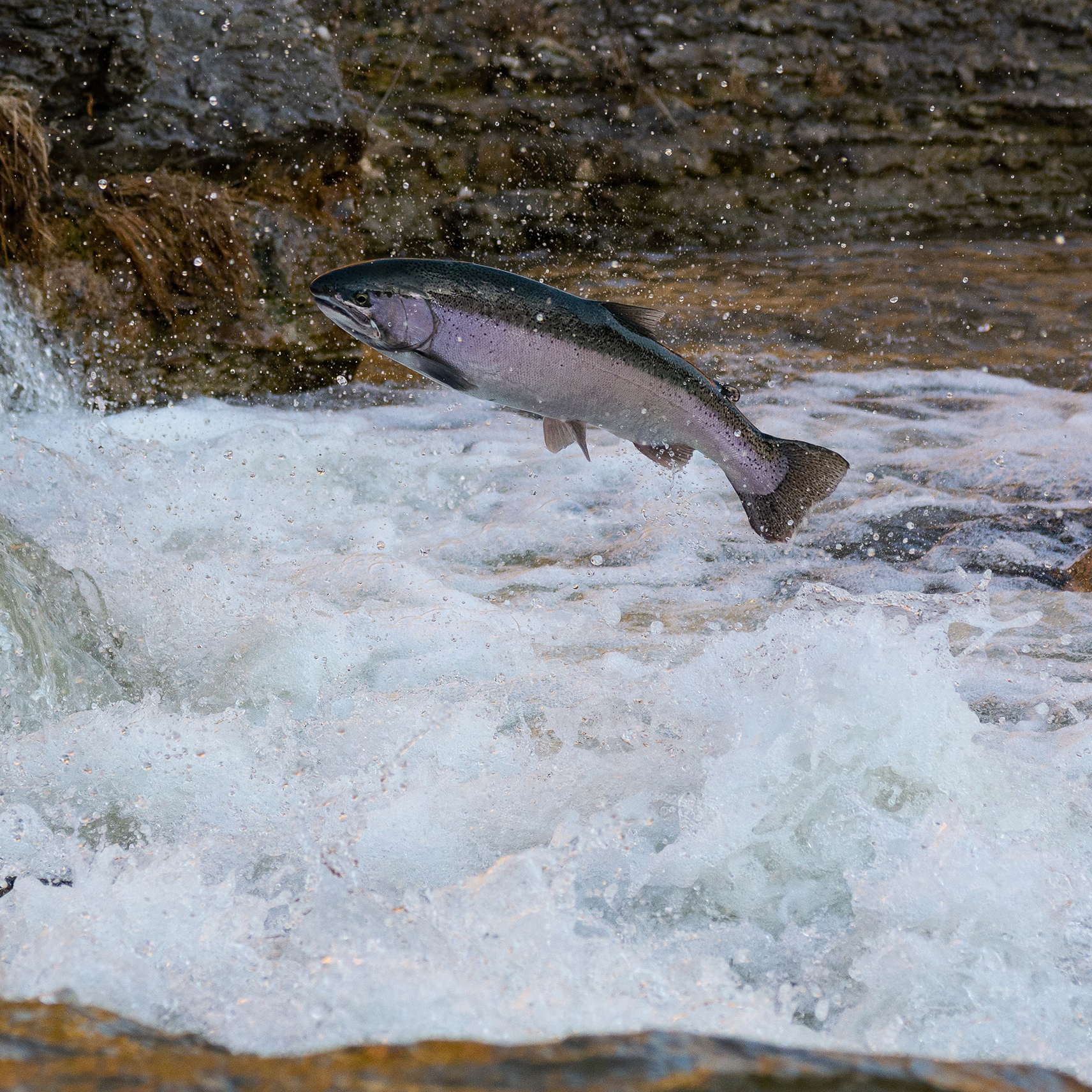
Brandon (@greener_30) on Unsplash
Our Top Tip
Don’t dump pesticides or rinse water into storm drains. This is illegal. Poor handling and use of pesticides pollutes drinking and surface waters. Dumping pesticides into a drain is harmful to people and the environment.
PESTICIDES MOVE WITH WATER & AIR
- Pesticides applied to landscapes may travel into water via irrigation or rainfall. They can also leach into groundwater and flow into storm drains.
- Pesticides that move into waterways may reach levels that can harm creatures living in the water.
- Urban areas have hard surfaces that shed and transport water. These hard surfaces include pavement and roofs. Hard surfaces reduce the water’s ability to soak into the ground and increase runoff.
Check the weather before making a pesticide application. Only apply pesticides when the weather conditions are favorable based on instructions on the product label.
- The law requires you to read and follow pesticide directions.
- To protect water quality, make sure you understand the environmental warnings.
- Look for the ENVIRONMENTAL HAZARDS section on the product label. The section is often inside a booklet or pamphlet.
- Look for the DIRECTIONS FOR USE section of the product label. Follow the instructions.
- Calibrate your pesticide application equipment. Make sure you apply the right amount.
Learn How to Calibrate Your Sprayer
Calibrating a backpack sprayer enables you to apply the correct amount of a pesticide over an area.
See instructions on How to Calibrate a Backpack Sprayer (Penn State University).
Content provided by Weston Miller and Kaci Buhl. Information sourced courtesy of Western IPM Center Water Quality Protection Project
Peer reviewed by OSU Department of Horticulture.
Pesticides and Water Quality References
Pesticide Environmental Stewardship
eXtension
Safe and Effective Use in the Home Landscape (UC ANR Publication 74126). Also available in Spanish as Pesticidas: Uso Seguro y Eficaz en el Hogar y en Jardines
Also consult the UC IPM WaterTox database, which provides information on the potential impacts of pesticides on water quality.
